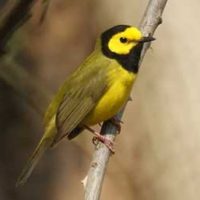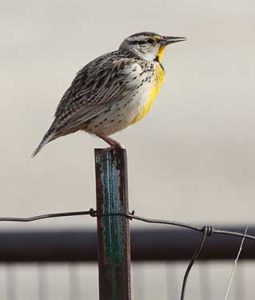Songbirds

By Rick Horton, National Wild Turkey Federation
Songbirds are everywhere, and the habitat requirements of individual species vary widely.
Thus, the guidelines below are simply recommendations for helping birds in general. For assistance with attracting specific songbirds, contact the American Bird Conservancy, or your local Audubon chapter or ornithological society.
General recommendations for managing bird habitat
- Maintain a mix of both young and old forests with a diversity of forest types. Large blocks of mature forest benefit some species, such as wood thrushes and vireos, while other species do better in young forests with extensive edge habitats. Young aspen stands, in particular, are excellent breeding habitat for many early successional forest songbirds, such as golden-winged warblers, chestnut-sided warblers, and eastern towhees.
- Know the “big picture” context of your property. For example, if you own a small woodlot in a much larger landscape of farm fields, you most likely won’t attract “interior” forest species to your property.
- Forest openings are used by grassland and forest bird species alike. Maintain these openings through periodic mowing or burning.
- Fruit-bearing trees and shrubs attract a lot of bird species in the fall. Songbirds preparing to migrate particularly favor highbush cranberry, Juneberry, elderberry, blueberry, flowering crab, cherries, dogwood and mountain ash.
- To help protect ground-nesting birds, restrain household pets and consider managing furbearer populations.

Prairie and grassland birds
Prairie and grassland songbirds have declined more than any other group of birds due to the massive conversion of prairie and savanna habitats to farmlands. Bobolinks, dickcissels, upland sandpipers, grasshopper sparrows, meadowlarks, and many other grassland species now depend on abandoned farms, old fields, and Conservation Reserve Program lands for their habitat.
Periodic mowing, disking, or burning will keep these fields in an open state. However, to reduce the chances of destroying bird nests, it’s important to burn fields only in the very early spring or in the fall, as well to wait until after August to mow. Light grazing can also help maintain open fields, but, again, hold off until after breeding season.
A note on tree plantations
You may be tempted to plant an old field to a pine plantation for a rapid timber crop. This is a mistake, though, if your primary goal is to manage for birds and other wildlife. The heavily shaded understory of tree plantations is generally too bare and open to support most wildlife species.
If having plantations is one of your goals, however, keep them small – less than 10 acres in size – and space them 600 to 900 feet apart. Also, plant trees at a 7- by 9-foot (or greater) spacing, rather than the usual 7- by 7-foot. This will let more light reach the forest floor, allowing plants, shrubs, and other small trees to flourish.
As soon as possible, thin conifers to 60- to 80-square-feet of basal area. Not only will the remaining trees grow faster but the stand will be more diverse for wildlife.
